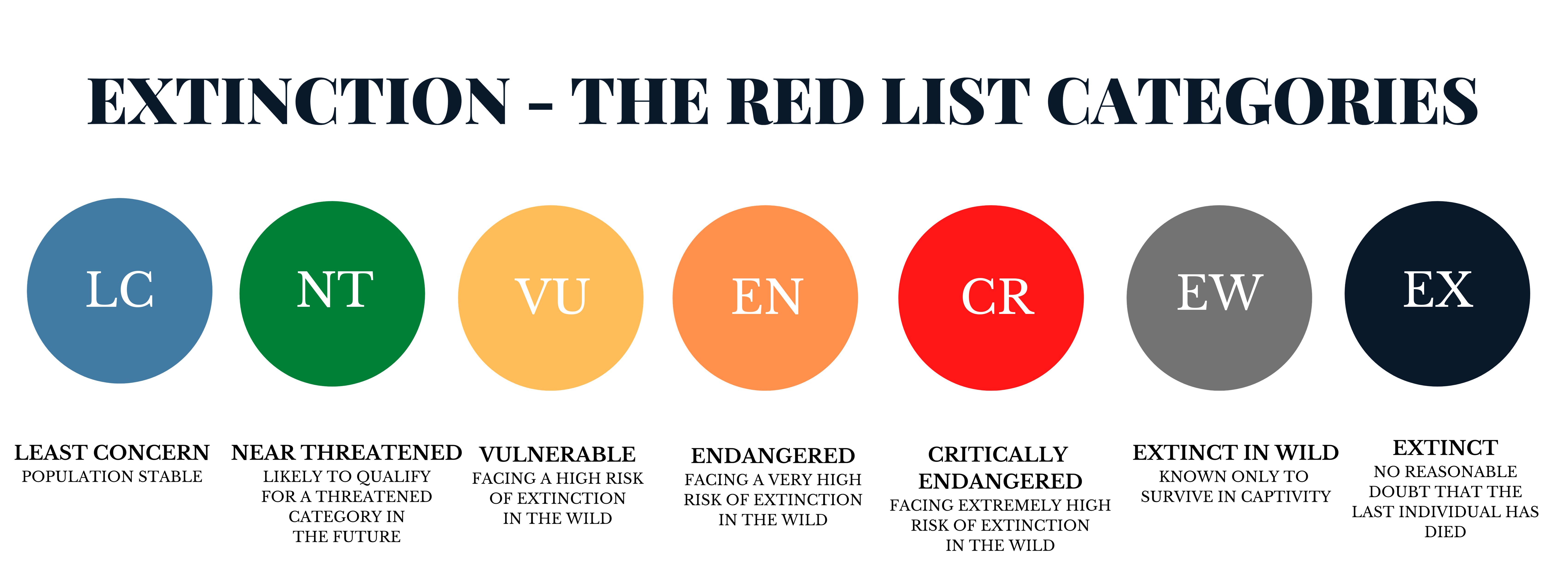
Project Selection
Explorers Against Extinction works to raise funds and profile for projects protecting threatened species and their habitats. We support specific projects rather than donating into core funds. These range in both size and destination – we have supported projects all over the world including here in the UK, donating as little as $2,500 USD to as much as $50,000 USD to any single project.
Most of the projects we support are immediate-need, and they usually benefit the local community in some way as well. All projects we support need to be fully costed so we can see exactly where funds are going. We also require follow-up reports.
So how do you know if a species is threatened with extinction?
The International Union for Conservation of Nature (IUCN) Red List
The IUCN Red List of Threatened Species was established in 1964 and is the most authoritative source of information on the conservation status of animals, plant and fungi.
The Red List is a critical indicator of the health of the world’s biodiversity. Far more than a list of species and their status, it is a powerful tool to inform and catalyse action for biodiversity conservation and policy change, critical to protecting the natural resources we need to survive. It provides information about range, population size, habitat and ecology, use and/or trade, threats, and conservation actions that will help inform necessary conservation decisions.
More than 37,400 species are threatened with extinction. This is 28% of assessed species (134, 425).
The IUCN Red List is used by governments, wildlife departments, educational institutions and conservation focused NGO’s and charities like EAE to obtain information and statistics on wildlife in general and individual species in particular.
Species on the Red List are categorised into nine potential categories. Two of these are for species not yet studied; DD – Data Deficient and NE – Not evaluated.
The next seven are:
LC – Least Concern
NT – Near Threatened
VU – Vunerable
EN – Endangered
CR – Critically Endangered
EW – Extinct in the Wild
EX – Extinct
For a species to be called ‘Threatened’ it must be in either the VU, EN or CR categories.
So how does the IUCN decide on which category to put a species in? It’s not just done on numbers as a species might have a healthy population but if that population is packed into a small area it is susceptible to a disease outbreak or loss of habitat. It also assesses the risks to a species and the current trend, trying to assess the immediate future over 10 years or three generations.
The following infographic explains these criteria in more details.

For more information: Visit the IUCN website Download the IUCN Guide
Sometimes a species on the list may not have been assessed for many years, or there may be regional variations in numbers/new threats to consider, in which case we rely on the information provided by expert local organisations. We always try to work with local people based in the country where we are supporting a project – this enables us to get a fully rounded view and to understand the specific issues they face.
We do not exclusively work with species in the VU EN and CR categories but in most cases our projects do fall into this bracket.

